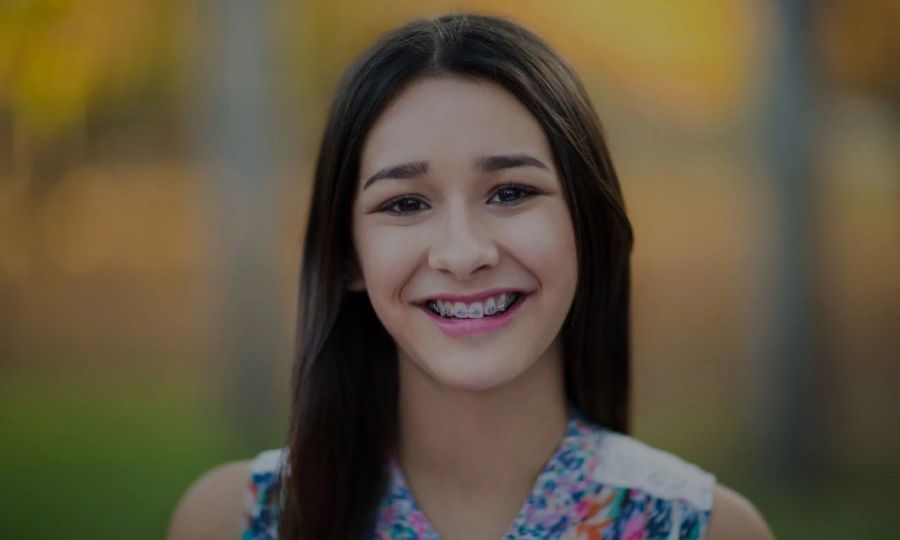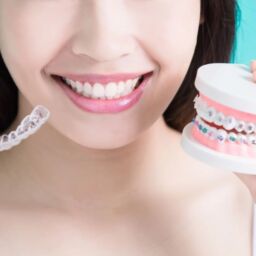
You’ve worried about your family’s oral health for so long, you’ve almost forgotten to take care of yourself! Though you take part in a daily oral hygiene routine, it’s been a while since you’ve gone to the orthodontist yourself. After taking your kids for their regular check-ups, you think, “Why not?” and book yourself an appointment.
Download “What You Need to Know About Orthodontic Treatment for Your Children” e-Book
You’ve worried so little about this for yourself you’re actually flabbergasted when the orthodontist says, “You could benefit from braces.”
The orthodontist takes the time to explain it’s natural for adults to get braces to help with corrections that were overlooked years ago and because technology makes orthodontic treatments much more manageable. In the case of adults, one of the biggest questions isn’t whether or not to pursue orthodontic treatment but to choose braces or Invisalign.
What Are Traditional Braces?
Traditional metal braces are metal wires connected to brackets that are adhered to your teeth. Your orthodontist will use tightening procedures with this wire to help guide your teeth into their appropriate shape and location.
What Is Invisalign?
Invisalign is a newer treatment option that offers greater flexibility in your treatment. The aligners are made of clear, plastic trays. For most of the day, you will wear these aligners much like you would a mouth guard—though aligners are virtually invisible and fit snugly over your teeth. Approximately every week, you’ll switch to a new aligner. Gradually, your teeth will shift into their proper place.
How Are the Options Similar?
Whether you decide to go with braces or Invisalign, you will be working with your orthodontist to correct any problems with the shape of your jaw or the orientation of your teeth. Both treatment options will take time and will gradually adjust your teeth over time.
Both are relatively painless procedures and will require regular check-ups with your orthodontist to ensure treatment is going smoothly; though, in the case of Invisalign, you’re likely to need fewer visits that are further apart.
How Are They Different?
When choosing between traditional braces or Invisalign, the most prominent difference is that braces are permanent fixtures in your mouth, and Invisalign is not. Since Invisalign consists of removable trays that only need to be in the mouth for approximately 22 hours a day, you can actually remove them to eat, which means you don’t need to change your diet. Traditional braces, being mounted to your teeth, will require special care when it comes to foods, as well as proper maintenance.
The trade-offs to the ease of Invisalign is that it is often more expensive than traditional braces. Invisalign tech is also more delicate than metal braces, which means it’s not appropriate for all treatments. Metal braces also often require less time for treatment.
Though metal braces have come a long way and are smaller than ever, they are still often visible in the mouth (though there are many stylish ways to add colourful bands and make a fashion statement with your braces). Invisalign is nearly invisible, and if you don’t tell people you have them, they may never know.
For adults, braces and Invisalign are both often effective options to make necessary corrections to the structure of your teeth. Speak with your orthodontist to find out which options are right for you. Consider your lifestyle, needs, budget, and preference. Either way, by committing to a healthy, straight smile, you’re giving yourself the gift of confidence and self-esteem.
























